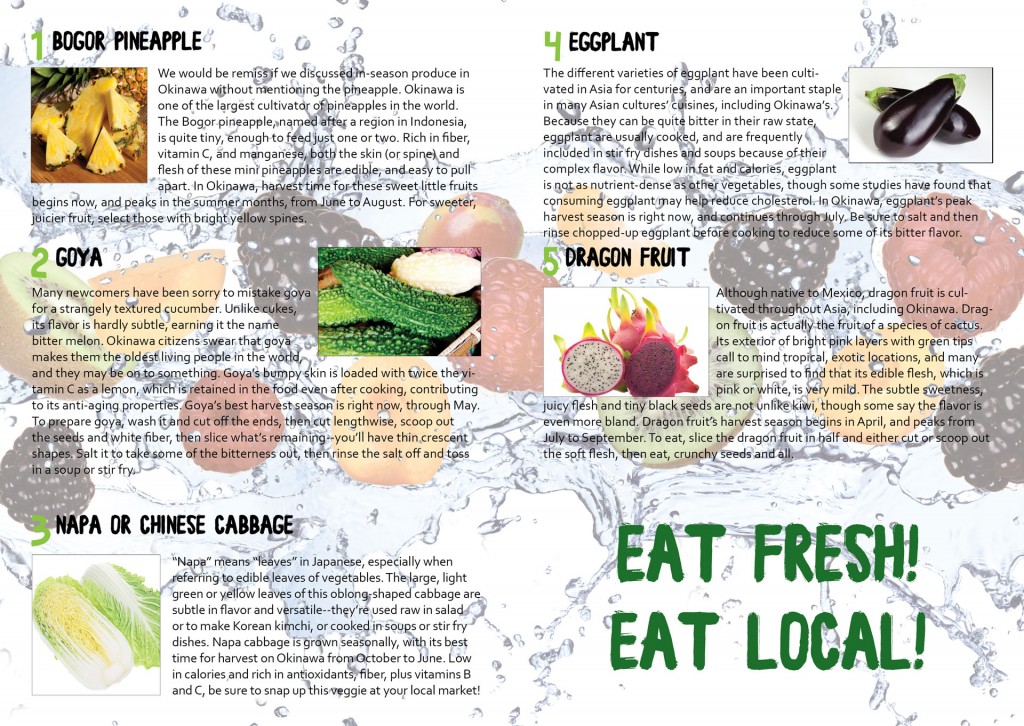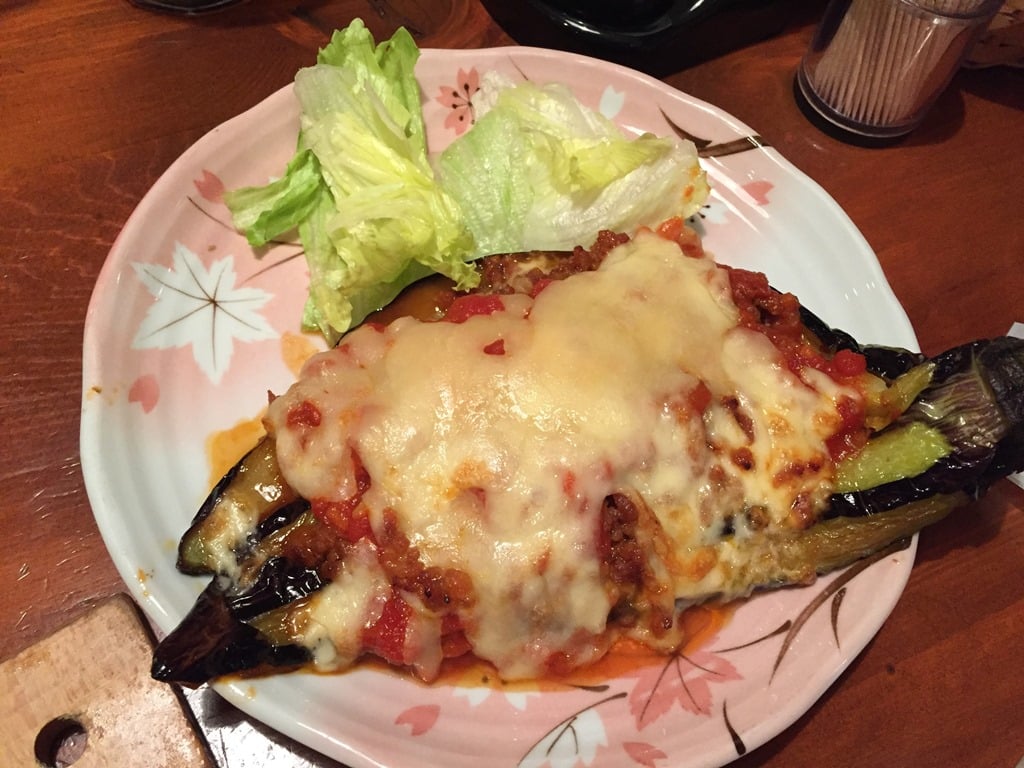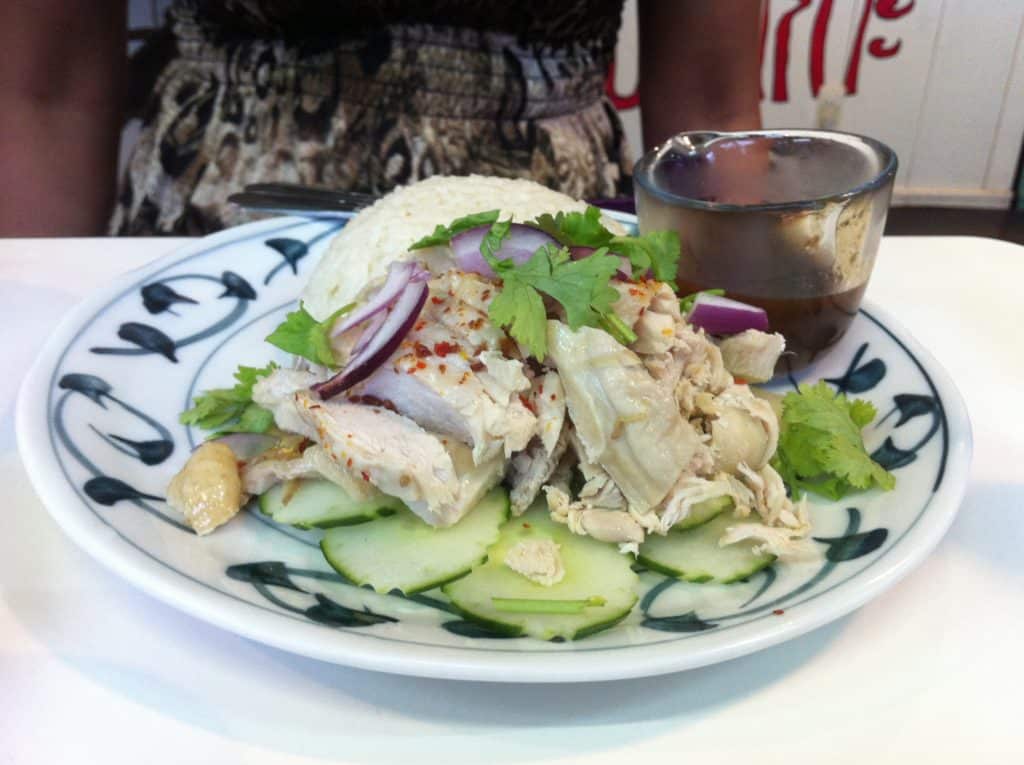Okinawa’s warm, subtropical climate and abundant sunshine make it ideal for growing lots of fruits and vegetables year-round. Farmer’s markets are cropping up everywhere, as both longtime residents and newcomers crave fresh produce at good prices. Sometimes it’s not enough to buy locally; consumers also want to know what’s in season, too. Check out our list of items you can expect to see at the markets now and when they’re best to buy, and what nutrients they have.
Bogor Pineapple: We would be remiss if we discussed in-season produce in Okinawa without mentioning the pineapple. Okinawa is one of the largest cultivator of pineapples in the world. The Bogor pineapple, named after a region in Indonesia, is quite tiny, enough to feed just one or two. Rich in fiber, vitamin C, and manganese, both the skin (or spine) and flesh of these mini pineapples are edible, and easy to pull apart. In Okinawa, harvest time for these sweet little fruits begins now, and peaks in the summer months, from June to August. For sweeter, juicier fruit, select those with bright yellow spines.
Goya: Many newcomers have been sorry to mistake goya for a strangely textured cucumber. Unlike cukes, its flavor is hardly subtle, earning it the name bitter melon. Okinawa citizens swear that goya makes them the oldest living people in the world, and they may be on to something. Goya’s bumpy skin is loaded with twice the vitamin C as a lemon, which is retained in the food even after cooking, contributing to its anti-aging properties. Goya’s best harvest season is right now, through May. To prepare goya, wash it and cut off the ends, then cut lengthwise, scoop out the seeds and white fiber, then slice what’s remaining–you’ll have thin crescent shapes. Salt it to take some of the bitterness out, then rinse the salt off and toss in a soup or stir fry.
Napa or Chinese Cabbage: “Napa” means “leaves” in Japanese, especially when referring to edible leaves of vegetables. The large, light green or yellow leaves of this oblong-shaped cabbage are subtle in flavor and versatile–they’re used raw in salad or to make Korean kimchi, or cooked in soups or stir fry dishes. Napa cabbage is grown seasonally, with its best time for harvest on Okinawa from October to June. Low in calories and rich in antioxidants, fiber, plus vitamins B and C, be sure to snap up this veggie at your local market!
Eggplant: The different varieties of eggplant have been cultivated in Asia for centuries, and are an important staple in many Asian cultures’ cuisines, including Okinawa’s. Because they can be quite bitter in their raw state, eggplant are usually cooked, and are frequently included in stir fry dishes and soups because of their complex flavor. While low in fat and calories, eggplant is not as nutrient-dense as other vegetables, though some studies have found that consuming eggplant may help reduce cholesterol. In Okinawa, eggplant’s peak harvest season is right now, and continues through July. Be sure to salt and then rinse chopped-up eggplant before cooking to reduce some of its bitter flavor.
Dragon Fruit: Although native to Mexico, dragon fruit is cultivated throughout Asia, including Okinawa. Dragon fruit is actually the fruit of a species of cactus. Its exterior of bright pink layers with green tips call to mind tropical, exotic locations, and many are surprised to find that its edible flesh, which is pink or white, is very mild. The subtle sweetness, juicy flesh and tiny black seeds are not unlike kiwi, though some say the flavor is even more bland. Dragon fruit’s harvest season begins in April, and peaks from July to September. To eat, slice the dragon fruit in half and either cut or scoop out the soft flesh, then eat, crunchy seeds and all.
![]()





















